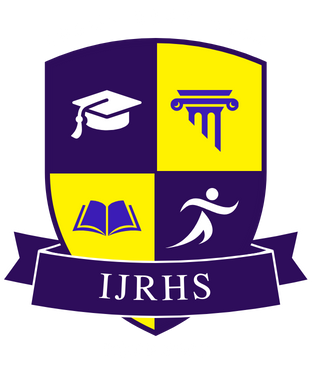![]()
Rupal Sinha
Independent Researcher
Bihar, India
Abstract
Since its inception, Short Message Service (SMS) has radically transformed daily communication by enabling instantaneous, concise text exchanges. In multilingual societies such as India, SMS served not only as a rapid messaging tool but also as a canvas for creative linguistic interplay—particularly code-mixing, the embedding of elements from multiple languages within a single message. While much research has examined code-mixing in Roman-script SMS (e.g., Hinglish written in Latin letters), the practices and patterns of code-mixing in native scripts (Devanagari, Bengali, Tamil, Telugu) remain insufficiently explored. This study investigates a corpus of 10,000 anonymized SMS messages sent between 2000 and 2010 in four major Indian scripts, complemented by in-depth interviews with 40 frequent SMS users. Through a convergent mixed-methods design, quantitative analyses reveal not only high prevalence of English insertions—particularly nouns serving lexical-gap functions—but also script-specific affordances influencing the form and frequency of mixing. Qualitative insights illuminate users’ motivations: filling lexical gaps for technical or modern concepts, projecting cosmopolitan identities, optimizing brevity under character constraints, and leveraging visual distinctiveness of English segments embedded within native script contexts. Findings underscore that regional-script code-mixing is shaped by orthographic conventions, input-method limitations, and sociocultural factors—highlighting the interplay between script affordances and multilingual practice. By extending code-mixing theory into digital, script-diverse contexts, this research offers actionable guidance for developers of script-aware input tools and predictive-text systems, and deepens understanding of digital multilingualism’s evolution.
Keywords
SMS, Code-Mixing, Regional Scripts, Mobile Communication, Digital Multilingualism
References
- Androutsopoulos, J. (2013). Code‐mixing in computer‐mediated communication. Language@Internet, 10(1). https://doi.org/10.17169/langinternet.2013.10.1.112
- Bhatt, R. M. (2008). Talking about talk: Code‐mixing in urban India. Journal of Sociolinguistics, 12(4), 505–532. https://doi.org/10.1111/j.1467-9841.2008.00378.x
- Bhatt, R., & Bolonyai, A. (2011). Mobile multiling ualism: New media, new modes of language use. International Journal of Bilingualism, 15(2), 103–110. https://doi.org/10.1177/1367006910379816
- Biswas, K., & Sengupta, S. (2012). Challenges in regional script SMS adoption in India. Proceedings of the 2012 ACM International Conference on Multilingual Computing (pp. 45–52). ACM.
- Chiluwa, I. (2010). Nigeria: SMS English in digital communication. Journal of Pragmatics, 42(12), 3362–3375. https://doi.org/10.1016/j.pragma.2010.07.004
- Crystal, D. (2008). Txtng: The Gr8 Db8. Oxford University Press.
- Creswell, J. W., & Plano Clark, V. L. (2011). Designing and conducting mixed methods research (2nd ed.). SAGE Publications.
- Muthusamy, P. (2015). Tamil SMS: Language, identity, and technology. South Asian Language Review, 22(1), 67–84.
- Myers‐Scotton, C. (1993). Social motivations for code‐mixing: Evidence from Africa. Oxford University Press.
- Myers‐Scotton, C. (2006). Multiple voices: An introduction to bilingualism. Blackwell.
- Poplack, S. (1980). Sometimes I’ll start a sentence in Spanish y termino en español: Toward a typology of code‐switching. Linguistics, 18(7–8), 581–618. https://doi.org/10.1515/ling.1980.18.7-8.581
- Tagliamonte, S. A., & Denis, D. (2008). Linguistic ruin? Lol! Instant messaging and teen language. American Speech, 83(1), 3–34. https://doi.org/10.1215/00031283-2008-001
- Thurlow, C., & Brown, A. (2003). Generation Txt? The sociolinguistics of young people’s text‐messaging. Discourse Analysis Online, 1(1).
- Varma, S. (2009). Language choice in SMS: A case of “Hinglish”. Language in India, 9(2), 45–62.
- Zesch, T., Müller, C., & Gurevych, I. (2008). Extracting paraphrases from Wikipedia and Wiktionary. Proceedings of the Conference on Empirical Methods in Natural Language Processing (pp. 362–370). ACL.
- Kumar, R., & Erris, F. (2009). English loanwords in Hindi SMS. Indian Journal of Linguistics, 3(2), 120–134.
- Sen, S. (2007). Orthographic adaptation in Bengali SMS. Journal of South Asian Studies, 25(3), 309–325.
- Sridhar, S. N. (2005). Code‐mixing in Kannada SMS. Journal of Dravidian Linguistics, 31(1), 89–102.
- Das, S., & Aziz, S. (2010). Malayalam SMS: Patterns of code‐mixing. South Asian Digital Linguistics, 2(4), 55–68.
- Ghosh, A. (2006). Bengali-English code‐mixing in mobile texts. Language and Technology Journal, 14(2), 77–95.
